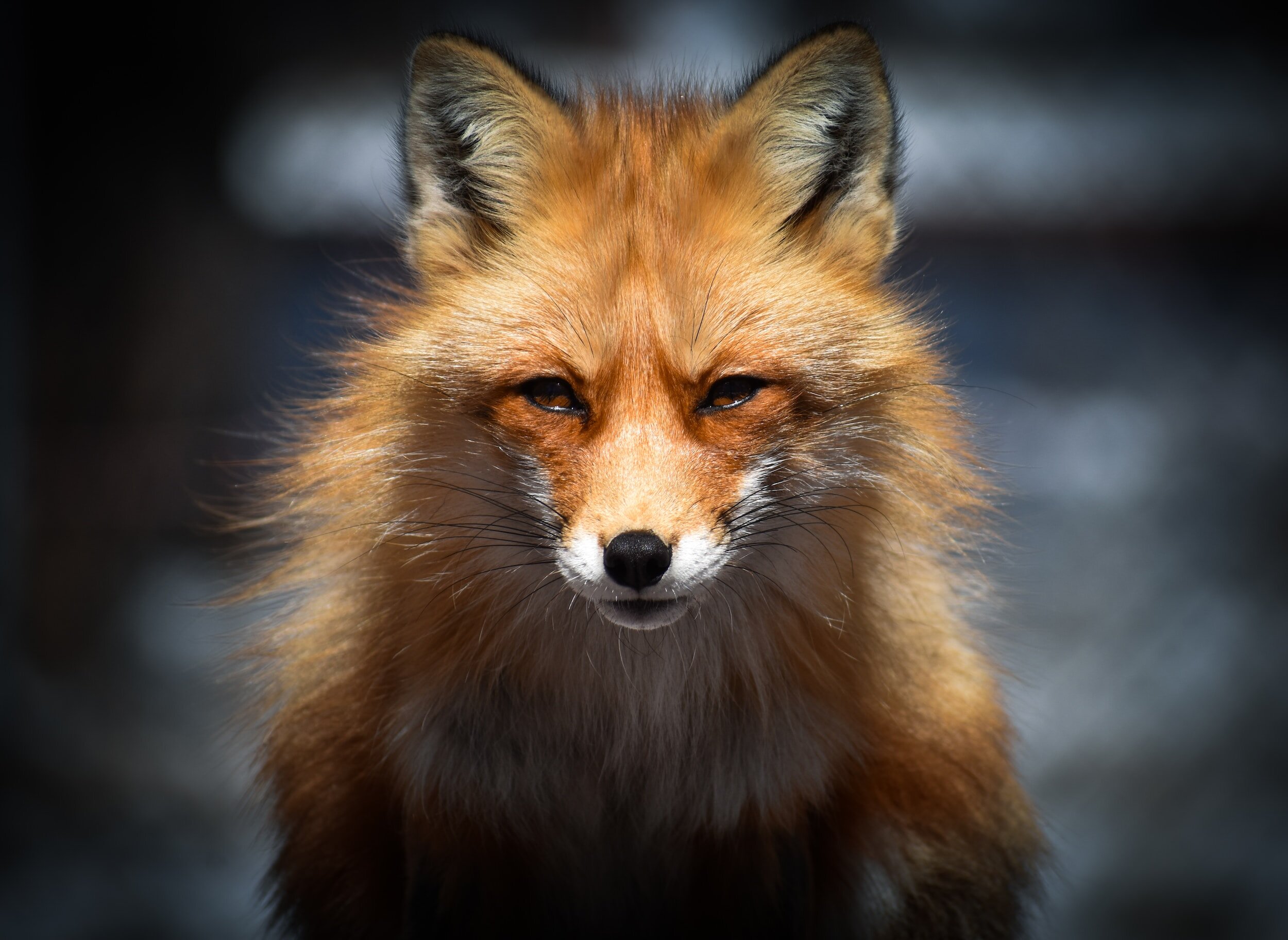Fox Symbolism in Traditional European Culture: Cunning Trickster, Mystical Guide, & Cultural Archetype
Abstract
The fox has occupied a unique position in European cultural consciousness for millennia, serving as a complex symbol that bridges the mundane and mystical realms. This comprehensive analysis examines the multifaceted role of fox symbolism in traditional European contexts, exploring its manifestations in Celtic mythology, medieval literature, folklore, and artistic traditions. Through examination of primary sources and scholarly research, this study reveals how the fox has functioned as a trickster figure, spiritual guide, and cultural mirror reflecting human nature and societal values across diverse European traditions.
Introduction
Within the vast tapestry of European cultural symbolism, few creatures have captured the imagination as persistently as the fox. From the mist-shrouded hills of Celtic Ireland to the medieval courts depicted in Reynard cycles, the fox has served as a potent symbol of cunning, transformation, and liminal wisdom. The fox appears in the folklore of many cultures, but especially European and East Asian, as a figure of cunning, trickery, or as a familiar animal possessed of magic powers, and sometimes associated with transformation.
This analysis examines the evolution and significance of fox symbolism within traditional European cultural contexts, focusing specifically on its roles as trickster, guide, and cultural archetype. Through systematic examination of mythological sources, literary works, and artistic representations, we explore how the fox has functioned as both a mirror of human nature and a bridge between the material and spiritual worlds.
The Fox as Liminal Being: Celtic Mythology and Otherworldly Connections
Shape-shifting and Transformation
In Celtic mythology, the fox occupies a unique position as a liminal creature capable of traversing boundaries between the physical and spiritual realms. The Celts also saw the fox as a symbol of transformation and rebirth. The fox's ability to shed its old coat and grow a new one each year was seen as a powerful metaphor for the cyclical nature of life and the importance of letting go of the past to embrace the future. This transformative quality positioned the fox as a powerful symbol of renewal and regeneration within Celtic cosmology.
Celtic traditions frequently depicted foxes as shape-shifters, beings capable of assuming various forms to navigate between worlds. These narratives reflect the Celtic understanding of reality as fluid and interconnected, where the boundaries between human, animal, and spirit were permeable. The fox's ability to change forms made it an ideal messenger between realms, carrying wisdom and warnings from the otherworld to the human domain.
Spiritual Guidance and Wisdom
In Celtic mythology and folklore, foxes are mystical guides, representing cleverness and transformation, urging you to trust your instincts in uncertain times. This role as spiritual guide reflects the fox's observed behavior in nature – its intelligence, adaptability, and ability to thrive in various environments. Celtic druids and storytellers interpreted these natural characteristics as evidence of supernatural wisdom.
The fox's nocturnal nature and keen senses made it a natural symbol for hidden knowledge and intuitive understanding. In Celtic tradition, encounters with foxes were often interpreted as omens or calls to pay attention to one's inner wisdom. Celtic mythology, the fox is wise and cunning. A trickster who knows the forest better than anyone else, the fox symbolizes the need to think fast and strategically.
The Medieval Literary Tradition: Reynard the Fox and Social Satire
Origins and Development
The medieval literary tradition of Reynard the Fox represents one of the most sophisticated expressions of fox symbolism in European culture. Reynard the Fox is a literary cycle of medieval allegorical Dutch, English, French and German fables. The first extant versions of the cycle date from the second half of the 12th century. This literary tradition emerged during a period of significant social change and political upheaval, providing a vehicle for social criticism and moral instruction.
Reynard The Fox, hero of several medieval European cycles of versified animal tales that satirize contemporary human society. Though Reynard is sly, amoral, cowardly, and self-seeking, he is still a sympathetic hero, whose cunning is a necessity for survival. The character of Reynard embodied the contradictions inherent in medieval society, where survival often required cunning and adaptability rather than noble virtue.
Social Commentary and Moral Instruction
The Reynard cycle served multiple functions within medieval society. On one level, it provided entertainment through clever stories of the fox's exploits. On a deeper level, it offered sharp social commentary on the corruption and hypocrisy of medieval institutions, particularly the church and nobility. Their presence in animal folklore in Europe frequently emphasizes intelligence, as seen in Reynard the Fox tales, which use the cunning fox archetype to critique societal norms and behavior.
The popularity of Reynard stories across multiple European cultures demonstrates the universal appeal of the fox as a symbol of clever survival in a corrupt world. These tales provided medieval audiences with a safe way to critique authority figures and social institutions through the guise of animal fables. The fox's ability to outwit more powerful opponents resonated with common people who faced similar challenges in their daily lives.
Literary Influence and Cultural Impact
The Reynard tradition significantly influenced European literature and cultural understanding of fox symbolism. The following three sections describe the development and richness of the medieval Reynard stories. Their development is sketched, first in general, then with special attention to Reynaerts histoire – the source of all the early modern fox stories in Western Europe. This literary heritage established the fox as a complex character capable of both admiration and condemnation, reflecting the moral ambiguity of human nature.
The enduring popularity of Reynard stories throughout the late medieval period and into the early modern era demonstrates their cultural significance. These narratives provided a framework for understanding cunning as both a survival strategy and a moral challenge, themes that continue to resonate in contemporary culture.
Folk Traditions and Regional Variations
Northern European Folklore
In Northern European folk traditions, the fox appears in various roles that reflect regional cultural values and environmental conditions. Scandinavian folklore often portrays foxes as clever beings capable of both helping and hindering human endeavors. These stories typically emphasize the fox's intelligence and adaptability, qualities essential for survival in harsh northern climates.
The fox's role in Germanic folklore shares similarities with Celtic traditions, emphasizing its function as a boundary-crosser and messenger between worlds. German folk tales often feature foxes as advisors or guides, helping protagonists navigate moral or physical challenges through clever solutions rather than brute force.
Slavic Interpretations
It's been quite a few months since we've talked about animals on Slavic Saturday, but that's about to change. We've discussed horses, birds, and cats. Slavic folklore presents unique interpretations of fox symbolism, often emphasizing the creature's connection to forest spirits and supernatural forces. In these traditions, foxes frequently serve as intermediaries between humans and the natural world, carrying messages from forest deities or providing warnings about natural dangers.
The Slavic understanding of fox symbolism often incorporates elements of both reverence and caution, reflecting the complex relationship between human communities and the wilderness. These narratives emphasize the fox's role as a teacher, showing humans how to navigate the challenges of living in harmony with nature.
Western European Variations
Western European folklore, particularly in France and England, developed sophisticated fox symbolism that combined Celtic, Germanic, and Latin influences. But foxes took on a different role in European magic tales, in which they often helped a human escape danger or complete a quest out of gratitude for an act of kindness. These stories often featured transformation themes, where foxes revealed their true nature as enchanted beings or rewarded human kindness with magical assistance.
The evolution of fox symbolism in Western European folklore reflects broader cultural changes, including the influence of Christianity on pre-existing pagan traditions. Many folk tales attempt to reconcile ancient beliefs about fox magic with Christian moral frameworks, creating complex narratives that preserve older wisdom while adapting to new religious contexts.
Artistic and Cultural Representations
Medieval Art and Illuminated Manuscripts
Medieval artistic representations of foxes provide valuable insights into cultural attitudes and symbolic meanings. Church art often depicted foxes in morally ambiguous contexts, sometimes as symbols of cunning temptation, other times as representations of divine wisdom working through humble creatures. These artistic choices reflect the complex theological questions surrounding animal symbolism in Christian thought.
Illuminated manuscripts frequently featured foxes in decorative borders and marginalia, suggesting their importance in medieval cultural consciousness. These artistic elements often combined realistic depictions with fantastical elements, emphasizing the fox's dual nature as both ordinary animal and supernatural being.
Heraldic Symbolism
The use of fox imagery in heraldic traditions demonstrates the creature's significance in medieval European nobility. Foxes appeared on family crests and coats of arms, typically symbolizing cunning, intelligence, and strategic thinking. These heraldic uses suggest that fox symbolism was valued not only in folk traditions but also in elite cultural contexts.
The integration of fox symbolism into heraldic traditions helped preserve and transmit cultural meanings across generations. Noble families who adopted fox imagery were making statements about their values and strategies, emphasizing cleverness and adaptability over brute force or inherited privilege.
Renaissance and Early Modern Adaptations
The Renaissance period saw continued interest in fox symbolism, with artists and writers adapting medieval themes for contemporary audiences. Renaissance art often depicted foxes in allegorical contexts, using them to represent various human qualities and moral lessons. These adaptations demonstrate the enduring relevance of fox symbolism in European cultural consciousness.
The printing revolution of the early modern period facilitated the spread of fox-related stories and images, helping to standardize certain symbolic meanings while allowing for regional variations. This period saw the emergence of fox symbolism in new media, including printed books, broadsheets, and decorative arts.
Psychological and Anthropological Perspectives
Archetypal Analysis
From a psychological perspective, the fox represents a complex archetype that embodies both positive and negative aspects of human nature. The fox's cunning can be interpreted as either admirable intelligence or dangerous deception, depending on cultural context and individual values. This ambiguity makes the fox a particularly rich symbol for exploring moral and ethical questions.
The fox's role as a trickster figure aligns with broader patterns in human psychology and culture. Trickster archetypes serve important functions in human societies, providing outlets for challenging authority, questioning social norms, and exploring moral boundaries. The fox's prevalence in European folklore suggests its importance in this psychological and cultural process.
Cultural Functions
Anthropological analysis reveals that fox symbolism serves multiple functions within European cultural systems. These include providing models for adaptive behavior, offering frameworks for moral instruction, and creating shared cultural narratives that strengthen social bonds. The fox's symbolic complexity allows it to fulfill these diverse functions simultaneously.
The cross-cultural prevalence of fox symbolism suggests universal human responses to the creature's observed characteristics. The fox's intelligence, adaptability, and survival skills represent qualities that humans both admire and need to develop. This practical foundation gives fox symbolism its enduring relevance and power.
Contemporary Relevance and Legacy
Modern Adaptations
Contemporary European culture continues to draw upon traditional fox symbolism, adapting ancient themes for modern contexts. European Legends In Europe, foxes were often viewed as cunning and clever. In medieval times, the fox symbolized deceit in fables and stories, especially in "Reynard the Fox," a famous tale of a sneaky fox who outwits everyone around him. These modern adaptations often emphasize the fox's intelligence and adaptability, qualities particularly relevant in rapidly changing contemporary society.
Literature, film, and other media continue to explore fox symbolism, often focusing on themes of survival, cunning, and transformation. These contemporary works build upon centuries of cultural development while addressing modern concerns and values.
Cultural Preservation
The preservation of traditional fox symbolism in contemporary European culture demonstrates the enduring value of these ancient narratives. Museums, cultural institutions, and educational programs work to maintain awareness of fox symbolism's historical significance while exploring its contemporary relevance.
Digital media and global communication have facilitated new forms of cultural exchange around fox symbolism, allowing for cross-cultural dialogue and adaptation. These developments suggest that fox symbolism will continue to evolve while maintaining its connection to traditional European cultural roots.
Conclusion
The examination of fox symbolism in traditional European culture reveals a rich and complex symbolic system that has evolved over millennia. From Celtic shape-shifters to medieval literary heroes, from folk tale tricksters to heraldic symbols, the fox has served as a multifaceted mirror reflecting human nature and cultural values.
The fox's enduring presence in European cultural consciousness demonstrates its effectiveness as a symbol for exploring fundamental questions about intelligence, morality, adaptation, and survival. Its liminal nature – existing between wild and domestic, helpful and harmful, wise and cunning – makes it particularly suitable for representing the contradictions and complexities of human experience.
Contemporary society continues to find relevance in traditional fox symbolism, adapting ancient wisdom for modern challenges. The fox's emphasis on intelligence, adaptability, and strategic thinking resonates with contemporary values while maintaining connection to cultural heritage. This continuity suggests that fox symbolism will continue to evolve and remain relevant in future cultural developments.
The comprehensive analysis of fox symbolism in European culture reveals not only the richness of traditional narratives but also their continuing importance in contemporary cultural discourse. Understanding these symbolic traditions provides insight into European cultural history while offering resources for navigating contemporary challenges.
References
Block, E. C., & Varty, K. (1999). Reynard, Renart, Reinaert and other foxes in medieval England: The iconographic evidence. Amsterdam University Press.
Britannica. (1998, July 20). Reynard the Fox. Encyclopedia Britannica. https://www.britannica.com/topic/Reynard-the-Fox-literary-character
Lair, A. (2006). The history of Reynard the Fox: How medieval literature reflects culture. Universitas, 2(1), 12.
Nature Canada. (2017, December 10). Vulpes, vixen and... Vulpix? Foxes in folklore and popular culture. https://naturecanada.ca/news/blog/vulpes-vixen-and-vulpix-foxes-in-folklore-and-popular-culture/
Noble, B. (2021, June 18). The role of foxes in Slavic mythology and folklore. Slavic Saturday. https://brendan-noble.com/the-role-of-foxes-in-slavic-mythology-and-folklore/
Sweetellabella. (2024, November 6). Foxes in folklore: What these clever creatures represent. https://www.sweetellabella.com/blog/foxes-in-folklore-what-these-clever-creatures-represent
Thorn and Claw. (2022, October 3). Spiritual meanings, folklore & fox as a spirit animal. https://www.thornandclaw.com/blogs/news/fox-meaning-and-symbolism
Triple Moon Psychotherapy. (2024, December 6). Fox symbolism across cultures: From trickster to guide. https://www.triplemoonpsychotherapy.com/archetypes-and-symbolism-myth-and-psyche/foxsymbolism
Varty, K. (1999). Reynard the Fox: A study of the fox in medieval English art. Leicester University Press.
White Rose of Avalon. (2021, September 26). The fox in myth and folklore. https://whiteroseofavalon.life/2021/09/26/the-fox-in-myth-and-folklore/
Wikipedia. (2025, May 25). Reynard the Fox. https://en.wikipedia.org/wiki/Reynard_the_Fox
Wikipedia. (2025, May 26). Foxes in popular culture. https://en.wikipedia.org/wiki/Foxes_in_popular_culture






